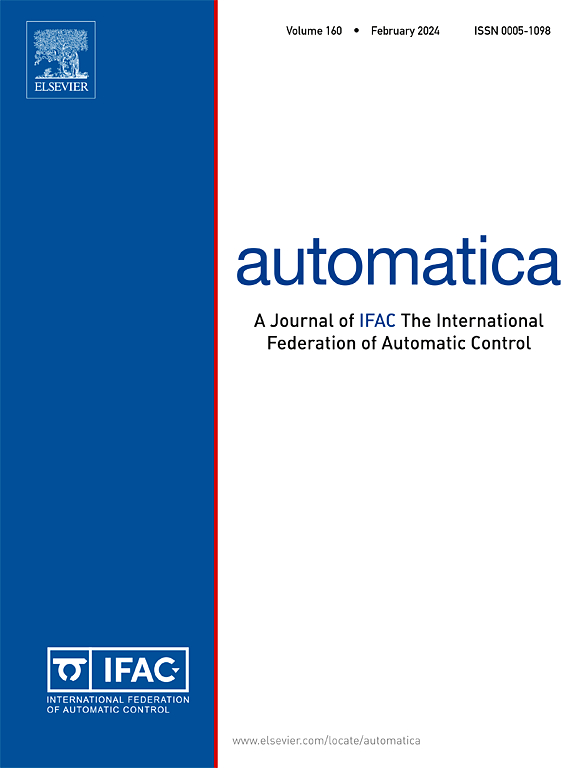区间矩阵不确定性神经网络控制系统的鲁棒稳定性
IF 5.9
2区 计算机科学
Q1 AUTOMATION & CONTROL SYSTEMS
引用次数: 0
摘要
神经网络以其通用性和高效性在控制器设计中越来越受欢迎。然而,将它们集成到反馈系统中可能会带来稳定性挑战,特别是在存在不确定性的情况下。本文研究了具有区间矩阵不确定性的神经网络控制系统鲁棒稳定性的证明问题。利用经典的鲁棒稳定性技术和基于二次约束的方法来表征神经网络的输入-输出行为,我们得到了用线性矩阵不等式表示的新型鲁棒稳定性证明。为了降低计算复杂度,我们引入了三个松弛的充分条件,并在可行性方面建立了它们的等价性。此外,我们还探讨了它们与现有鲁棒稳定性结果的联系。通过倒立摆和质量-弹簧-阻尼器实例验证了该方法的有效性。本文章由计算机程序翻译,如有差异,请以英文原文为准。
Robust stability of neural network control systems with interval matrix uncertainties
Neural networks have become increasingly popular in controller design due to their versatility and efficiency. However, their integration into feedback systems can pose stability challenges, particularly in the presence of uncertainties. This work addresses the problem of certifying robust stability in neural network control systems with interval matrix uncertainties. Leveraging classical robust stability techniques and the quadratic constraint-based method to characterize the input–output behavior of neural networks, we derive novel robust stability certificates formulated as linear matrix inequalities. To reduce computational complexity, we introduce three relaxed sufficient conditions and establish their equivalence in terms of feasibility. Additionally, we explore their connections to existing robust stability results. The effectiveness of the proposed approach is demonstrated through inverted pendulum and mass–spring–damper examples.
求助全文
通过发布文献求助,成功后即可免费获取论文全文。
去求助
来源期刊

Automatica
工程技术-工程:电子与电气
CiteScore
10.70
自引率
7.80%
发文量
617
审稿时长
5 months
期刊介绍:
Automatica is a leading archival publication in the field of systems and control. The field encompasses today a broad set of areas and topics, and is thriving not only within itself but also in terms of its impact on other fields, such as communications, computers, biology, energy and economics. Since its inception in 1963, Automatica has kept abreast with the evolution of the field over the years, and has emerged as a leading publication driving the trends in the field.
After being founded in 1963, Automatica became a journal of the International Federation of Automatic Control (IFAC) in 1969. It features a characteristic blend of theoretical and applied papers of archival, lasting value, reporting cutting edge research results by authors across the globe. It features articles in distinct categories, including regular, brief and survey papers, technical communiqués, correspondence items, as well as reviews on published books of interest to the readership. It occasionally publishes special issues on emerging new topics or established mature topics of interest to a broad audience.
Automatica solicits original high-quality contributions in all the categories listed above, and in all areas of systems and control interpreted in a broad sense and evolving constantly. They may be submitted directly to a subject editor or to the Editor-in-Chief if not sure about the subject area. Editorial procedures in place assure careful, fair, and prompt handling of all submitted articles. Accepted papers appear in the journal in the shortest time feasible given production time constraints.
 求助内容:
求助内容: 应助结果提醒方式:
应助结果提醒方式:


